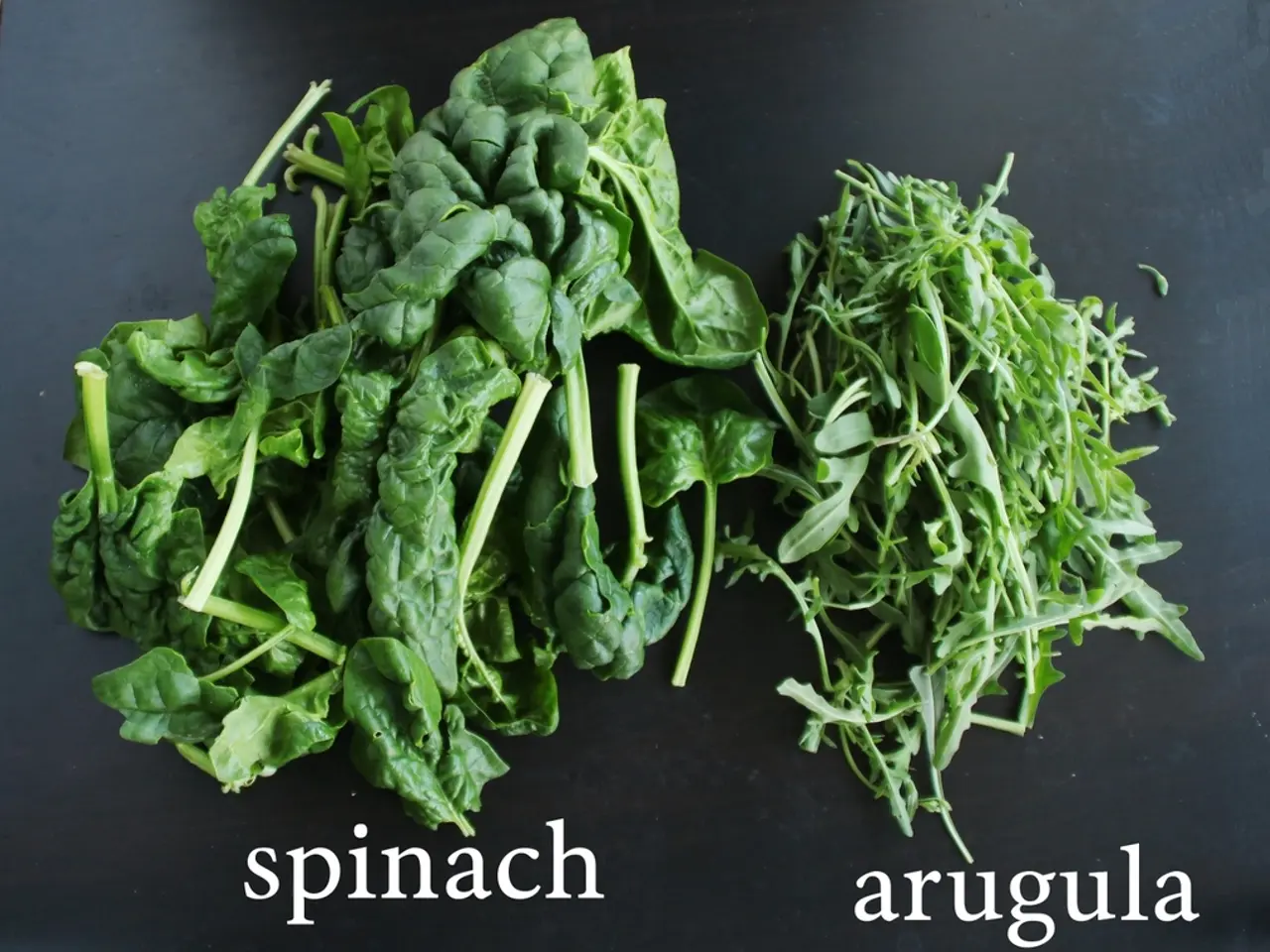Enhanced Disinfection of Various Greens in Fresh Agricultural Products via Chlorination Technique for Manufacturers in the Produce Industry
In the realm of food safety, chlorinated water plays a significant role in the disinfection of fresh produce. This article provides an overview of the common sources, uses, and considerations when working with chlorinated water in the fresh produce industry.
The three primary sources for preparing chlorinated water are sodium hypochlorite (liquid bleach), calcium hypochlorite (solid tablets or granules), and chlorine gas.
Sodium hypochlorite, often found in household bleach (approximately 5.25% available chlorine), is a liquid form commonly used for small-scale applications. Calcium hypochlorite, on the other hand, is available as tablets or granular products and is a solid form of chlorine, containing 65 to 68 percent active ingredient.
Chlorine gas, a gaseous source introduced directly from pressurized containers, is typically used for large-scale water treatment due to its cost-efficiency and effectiveness. However, it requires close monitoring due to its hazardous nature.
Once these sources are dissolved in water, they yield free chlorine, which is effective for sanitizing fresh produce and washing water to reduce microbial contamination. The choice among these sources depends on the scale, cost, and convenience for the industry.
The effectiveness of chlorinated water is highly dependent upon the pH of the solution, which should be between 6.5 to 7.5. The pH of chlorinated water can be checked and adjusted using a pH meter, pH test kits, or litmus paper. It's crucial to carefully monitor and adjust the pH as necessary, depending on the chlorine source used.
Submersion in chlorinated water for one minute, in a concentration of 75 to 200 ppm total chlorine, can achieve a microbial reduction of approximately 1.3 to 1.7 log units. Chlorinated water should be prepared fresh daily.
For leafy green vegetables with a high surface area to volume, liquid sanitizers may not have a direct contact with all surfaces contaminated by bacteria. Adding EPA-approved surfactants can help reduce the surface tension of the water and allow a uniform distribution of chlorinated water on leaf surfaces.
After sanitation, fresh produce should be rinsed with a lower concentration (2 to 7 ppm) of chlorinated water. Sodium hypochlorite solutions may have a shorter shelf life due to the absence of stabilizers. Chlorine sources should be stored in a cool, dark, dry place, with specific times and temperatures for each source listed in Table 2.
Food grade bleach, defined as sodium hypochlorite solution without any additives such as fragrances, stabilizers or thickeners, is the only bleach approved by the EPA for use in food processing.
In conclusion, chlorinated water is a valuable tool in the fresh produce industry for maintaining food safety. By understanding the sources, uses, and considerations, industry professionals can make informed decisions to ensure the highest quality and safety of their products.
Read also:
- Chest Pain Caused by Compressed Nerves: A Possibility Explored
- Weight and Plumpness: Exploring Health Consequences and Understandings
- Expectant mother resorts to marijuana for relieving morning sickness; state authorities deem her a child abuser.
- Discovering the Alleged Enhancement Method: Jelqing and Its Claimed Results






